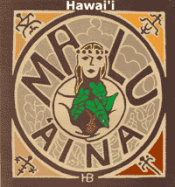RIMPAC 2022 Military War Games this summer in and around Hawaii
Navy expects 27 countries to attend RIMPAC this summer
As the Navy wrapped up a planning conference Friday for this year’s iteration of the biennial Rim of the Pacific Exercise, or RIMPAC, the service said that it expects sailors, vessels and aircraft from 27 countries to attend this summer.
The weeklong conference was co-hosted with the Royal Canadian Navy at Naval Base Point Loma in San Diego. In addition to U.S. and Canadian naval officers, leaders from Australia, Japan, New Zealand, Singapore and South Korea were present.
A Navy news release said 42 ships, five submarines, more than 170 aircraft and nearly 25,000 personnel are expected to participate in RIMPAC in waters off Hawaii and San Diego.
It’s a sizable increase from the 2020 exercise.
On March 6, 2020, U.S. Pacific Fleet leaders announced that at least 26 nations were expected to participate, making it the largest iteration in history of the world’s largest ongoing naval exercise. Five days later the World Health Organization declared COVID-19 a pandemic.
Only nine countries ultimately participated in RIMPAC 2020 with 22 ships, a single submarine and approximately 5,300 personnel. Usually a roughly two-month-long exercise, it was also cut down to about two weeks, and amphibious operations were canceled.
Service members also had no shore leave as they’d had during previous years, due to COVID-19 concerns.
The Navy said the weeklong planning conference at Point Loma “brought the RIMPAC senior leadership and staffs from seven RIMPAC partner nations together for detailed planning in advance of the world’s largest maritime exercise, scheduled to be held this summer in both Hawaii and San Diego.”
It was the third major planning event for the 2022 iteration and the first time the RIMPAC senior leadership team met face-to-face after remote planning sessions.
“Operating as a team is about trust. …” Royal Canadian Navy Rear Adm. Angus Topshee, deputy commander of RIMPAC 2022 combined task forces, said in a news release. “This week has really strengthened those bonds among the leadership and their staffs. I can’t wait to see this team in action.”
RIMPAC 2022’s final planning conference is scheduled to take place in late March.
The exercise comes at a time when President Joe Biden’s administration is trying to emphasize its commitment to the Indo-Pacific — and when relations between the Navy and Hawaii are incredibly strained as the response to the contamination of the Navy’s water system that serves 93,000 people continues.
Jet fuel from the service’s Red Hill storage facility is the source of the contamination, which sparked a water crisis that has lasted since late November. The Navy is under increasing pressure to empty its fuel storage tanks, which sit 100 feet above a critical aquifer that provides most of Honolulu’s drinking water.
The Pentagon is fighting a state emergency order to defuel the tanks, but Hawaii’s congressional delegation has introduced legislation that would require the Navy to empty the tanks and permanently shutter the facility by the end of the year.
Though the Navy has resisted the order, it has suspended fueling operations from the facility and is relying on above-ground tanks at Joint Base Pearl Harbor-Hickam for the time being. The Navy has maintained that the fuel reserve at Red Hill is critical to operations in the Pacific.
A 2018 Navy news release on Red Hill’s role during RIMPAC said the facility provided over 19 million gallons of fuel to U.S. and foreign ships and aircraft participating during the exercise that year. Twenty-five countries participated in RIMPAC 2018 with 46 surface ships, five submarines, 18 land-fighting contingents, more than 200 aircraft and 25,000 personnel overall.
The Chinese navy, which was invited by the Hawaii-based U.S. Pacific Fleet to attend in 2014 and 2016, was disinvited in 2018 before the exercise began amid souring relations between Washington and Beijing. But the Chinese navy made an appearance anyway with a spy ship in international waters off Hawaii monitoring the exercise.
Many countries expected to participate in RIMPAC have been embroiled in territorial disputes with China. Beijing considers almost the entire South China Sea, a critical waterway route through which at least one-third of all international trade travels, to be its exclusive territory within a maritime border called the “Nine-Dash Line.”
The Nine Dash Line encompasses numerous territories claimed by neighboring countries like Vietnam and the Philippines. The Philippines issued a legal challenge, and in 2016 an international court ruled that most of Beijing’s claims had no legal basis. But the Chinese military has dug in, stationing troops and building bases on disputed land formations, and sometimes attacking vessels from neighboring countries.
The U.S. Pacific Fleet has stepped up “freedom of navigation operations” in the region and sought to strengthen ties with countries that have expressed frustration with China’s claims.
